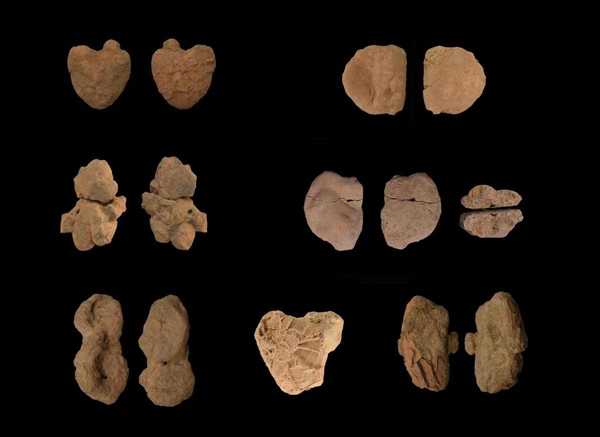Zhaojia Xuyao site
Author : REN ZHIYU Source : Chinese Social Sciences Today 2023-05-29

FILE PHOTO: Clay figurines found from the Xuyao site
China’s “Top 10 New Archaeological Discoveries of 2022” was announced on March 28, and the Zhaojia Xuyao site (Xuyao site for short), Linzi, Shandong Province, was among the new laureates. According to Zhao Yichao, leader of the excavation team, the site was accidentally discovered when the Shandong Cultural Relics and Archaeology Institute excavated a Han Dynasty tomb in cooperation with an infrastructure project in Linzi District. In the Han tomb, Zhao and his team noticed a thin layer of red baked earth exposed on the wall section. Baked earth generally refers to clay that has been baked with fire, which was widely used as an architectural material in the Neolithic Age.
The appearance of a baked earth layer indicates that ancient people may have been there and used fire. Following the trail, archaeologists found more baked earth deposits on the wall section 4 to 6 meters beneath ground, much deeper than the stratum where the Neolithic Houli Site [a Neolithic culture in Shandong about 8,000 years ago] was identified. They soon realized that the baked layer might date to an earlier age. Carbon-14 dating result suggested that the baked earth discovered at the Xuyao site dated from 11,000 to 15,000 years ago, corresponding to the transition period between the Paleolithic Age and Neolithic Age.
Archaeological analysis revealed that the environment where the Xuyao site was located 13,000 years ago was warm and humid. The unearthed artifacts indicate a scene where ancient humans gathered after hunting and gathering. Men brought back birds and deer and women brought back plants and fruits. They ate meat and used pottery to cook meat soups. After the meal, they made ceramic sculptures [perhaps for fun] with clay dug from the fire pits. Since the baked layer was very thin, archaeologists inferred that these ancient people just made a brief stop here. Perhaps they started their next journey after the meal and took any useful resources with them, leaving a pile of “trash” behind, allowing archaeologists to sift for archaeological gold today.
Ye Shengtao made Chinese fairy tales from a wilderness
Ye Shengtao (1894–1988) created the first collection of fairy tales in the history of Chinese children’s literature...
-
How northern ethnicities integrated into Chinese nation
2023-09-18
-
Mogao caves
2023-09-12
-
Mogao Grottoes as ‘a place of pilgrimage’
2023-09-12
-
Time-honored architectural traditions in China
2023-08-29
-
Disentangling the civilizational evolution of China
2023-08-28
-
AI ethics in science fiction
2023-08-23














 2011-2013 by www.cssn.cn. All Rights Reserved
2011-2013 by www.cssn.cn. All Rights Reserved